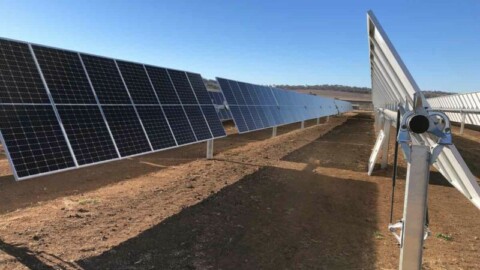With Perth’s recent heatwave sparking concern for Western Australia’s energy grid, the state has activated its first Virtual Power Plant (VPP).
On 30 January 2023, the Australian Energy Market Operator (AEMO) notified clean energy company Pilco to provide additional MW capacity to the grid through hundreds of its customer solar and battery systems.
This is Western Australia’s first ever activated VPP, where using cutting edge technology, all the systems will act as one giant battery to export energy to the grid during peak usage.
More than half of Plico’s power storage capacity was dispatched between the hours of 5pm and 7pm to support the grid. This included more than 3MW in power exported directly to the grid.
Plico CEO, Robbie Campbell, said the clean energy provided to the grid was due to the combination of high temperatures, the expected high-power usage and existing low power reserves.
“The VPP worked as it is designed to do, to provide additional power to offset the high household demand that would have otherwise strained the grid. We estimate that 3MW powers approximately 1,500 homes who may otherwise have suffered a blackout,” said Mr Campbell.
Mr Campbell said the last thing anyone wants are households without power.
“This heatwave naturally challenges the power system, especially during periods of extended and extreme weather. To avoid power disruptions to homes during such events, we provide additional clean energy power to the grid to help deal with the extra demand and bump up the reserves,” Mr Campbell said.
Plico assumed control of their customers’ batteries remotely and set them to store energy during the day. This enables the systems to export energy back to the grid later in the day when it’s needed. Plico batteries will then be set to discharge directly to the grid for a period of up to two hours, between 5pm and 9pm.
“To turn the heatwave into something good and provide clean energy back to the grid so houses don’t lose power, is why we exist. In a world where we demand action on climate change and being less reliant on fossil fuels, this is an opportunity to demonstrate the true power of a VPP, all through Western Australia’s sunlight,” Mr Campbell said.
The growing Plico Fleet currently has an aggregated battery of 10.5MWh and made as much of this capacity available to the Western Australia grid. This is one of the most significant contributions ever made by an activated VPP aggregator (outside of trials) to the energy market across Australia.
It’s well known that capacity in the Western Australia grid is under pressure due to declining coal production and the temporary closure of some coal-fired power plants. At the start of summer, the State Government announced the possibility of importing coal to keep the power on.
AEMO identified a potential reserve shortfall in Western Australia’s main power system over summer and has sought additional capacity from energy providers to cover this shortfall.
Plico is contracted to provide additional capacity to the grid during emergency peak demand periods.
If an event occurs, Plico said customers will be paid double the cost for the energy stored in their battery, and for any energy they may have purchased from the grid during the activation.
“We’re not sure how many more activations will occur, but we are prepared for any emergency,” Mr Campbell said.
The Plico VPP is supported by Redback Technologies, creators of the innovative Smart Hybrid Inverter technology used in Plico systems, and Amp X, who provides their proprietary VPP digital energy platform to enable monitor, control and optimised dispatch of Plico’s systems.
















